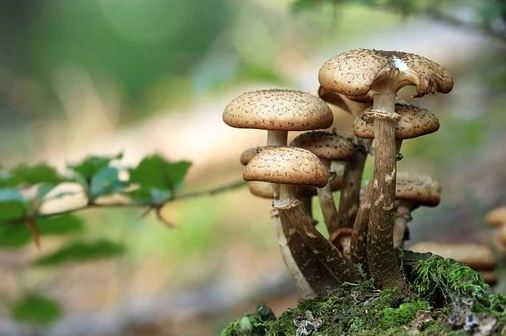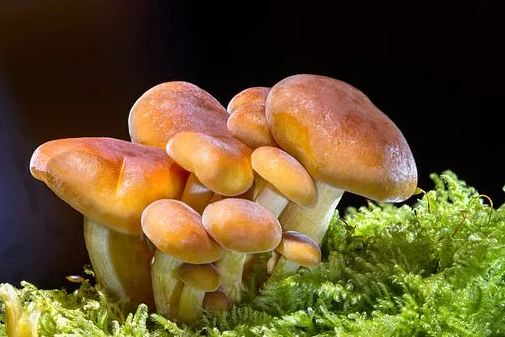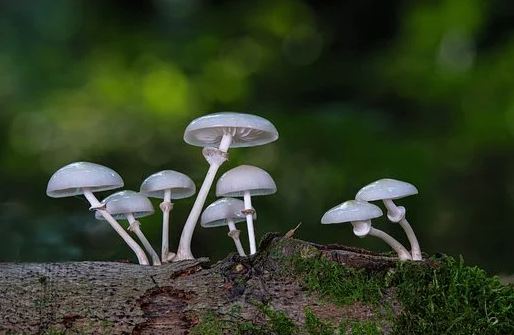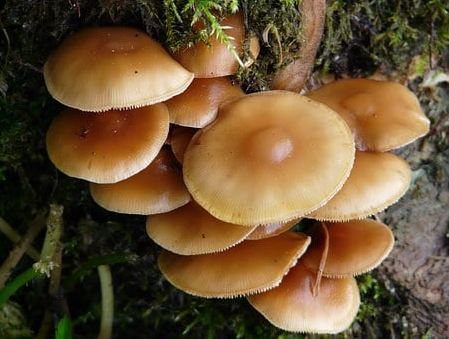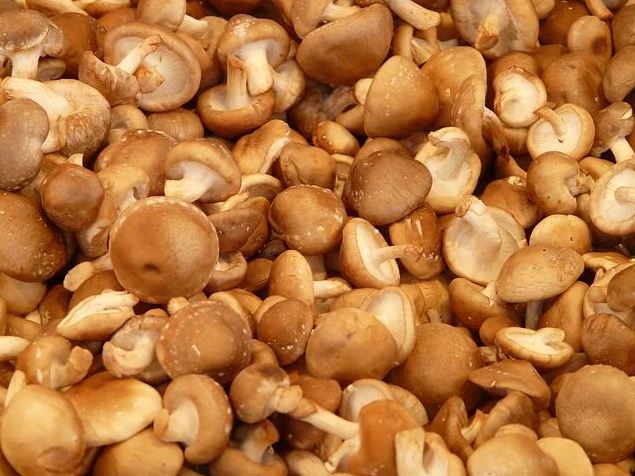A mushroom is considered as the fruiting body or plant that emerges out of fungi. However, despite their good appearance, not every mushroom can be eaten up. Some of them are poisonous which should be avoided at all costs. In fact, multiple types of mushrooms can be used for various purposes besides eating. Find out more about types of mushrooms in the guide below.
Types of Mushrooms
Button Mushrooms
Button mushroom, also called white mushrooms, is scientifically called Agaricus Bisporus. It is a member of the division basidiomycete, of the kingdom Fungi. It is one of the most popular types of mushrooms in the world and is grown in 70 countries.
Button mushrooms are the immature, white versions of Agaricus Bisporus.
The cultivation of this mushroom wasn’t prevalent at first. The common Agaricus was brown until the owner of the Keystone Mushroom Farm discovered a white mushroom growing in his field in 1925. From there, this mycelium was used for cultivation and grew in popularity steadfastly.
White button mushrooms require a warmer temperature of about 70 F/21C to grow. However, temperatures any higher than that can kill the spores. The mushroom requires a 50/50 mixture of manure and vermiculite.
The amount of medium required depends on the mass of the button mushroom spawn used. 50g of spawn would require 5 kg of the medium. We recommend horse manure because it has the highest nitrogen content. The mushrooms should start appearing in 2-3 weeks, however, they can’t be harvested before 5-6 weeks. Button mushrooms can be harvested year-round.
The spore print of the mushroom is brown.
Portobello Mushrooms
Portobello mushrooms are the matured versions of button mushrooms, the fungi Agaricus Bisporus. These mushrooms are brown and have a cap measuring 10–15 centimeters (4–6 inches). Other than the brown color of its cap, the dark brown gills under the mushroom are another distinction in its appearance. The spore print of the mushroom is brown.
Portobello mushrooms are available from December to March and don’t have a very long storage life. If stored with extreme care in the fridge, at 34ºF to 38ºF, and placed in a paper bag, the mushrooms can last up to 6-7 days.
Water should never be used for Portobello mushrooms. You can simply wipe them with a cloth, or use a brush to remove the dirt off. If you need to use water, wipe the mushrooms with a little water, and dry them immediately. Never wash them.
Oyster Mushrooms
Oyster mushrooms, Pleurotus ostreatus, were first grown during WW1 in Germany. During the tough days of the war, they were meant to be a source of sustenance. However, today, oyster mushrooms are grown and sold commercially and are included in a variety of dishes.
Originally, oyster mushrooms are wild mushrooms, although they are cultivated in straw and other mediums too. The cap of the mushroom is wide and flat and can be as long as 2–30 cm. The mushroom can be seen in brown, white, and gray, while the gills are cream or white. When spore printed, the mushrooms produce a white to lilac-gray spore print, which can be seen on dark backgrounds.
The mushrooms can normally be seen growing on wood in the wild. The ideal temperature for their growth is 20-30 C. To grow the mushrooms, the straw, ideally 5-10cm, is first washed in water. The water is then drained, and the straw is kept in plastic bags. The bags are steamed before the mycelium is added, and holes are made in the sides. From here, the oyster mushrooms grow out of the bag.
The mushrooms can be harvested in about 3-4 weeks, or about 3-4 days after the mushrooms first start to be seen.
Enoki Mushrooms
Enoki mushrooms, also called velvet shank, are a very big part of Japanese cuisine. Flammulina velutipes, as the mushroom is scientifically called, is part of the family Physalacriaceae, in the Kingdom Fungi. Naturally, the mushroom grows on the stumps on the Chinese hackberry tree, ash tree, mulberry tree, and permission trees.
Enoki mushrooms can be found from September- March and have different versions depending on the growing method. While enoki mushrooms have short, thick stumps, and a pink/ brown tint to them. Cultivated enoki mushrooms are white, and have thin, long stumps with small caps. This is because enoki mushrooms are cultivated in environments with a lot of CO2.
The caps are 1-5 cm wide, while the stem is 2-8 cm long, and 4-7 mm wide. Their spore print is white.
At home, enoki mushrooms are grown in aged sawdust that has been pushed into a glass jar. Enoki mushrooms need a temperature between 72-77F in the beginning. This is about 12-30 days. Once the mycelium has permeated the entire medium, the temperature is lowered to 50-55 F, and CO2 concentration is lowered by 80-90%.
Enoki mushrooms can be harvested a month after the mushrooms first started to develop.
Shiitake Mushrooms
Shiitake mushrooms, scientifically called Lentinula edodes, are an edible species of mushrooms native to East Asia. The first records of these mushrooms were found in 1209 during the Song dynasty in China.
These grow in decaying trees, especially maple, oak, chestnut, mulberry, and ironwood. Today, these mushrooms are grown commercially all over the world and are 25% of the mushrooms used worldwide.
The mushrooms are cultivated in blocks of Oakwood and require a temperature of about 59-68 F. Unlike enoki mushrooms, shiitake don’t need extra CO2. They need about 4-8 weeks for spawning, after which they are immersed in water for pinning. After that, the mushrooms grow in natural conditions.
Shiitake mushrooms have a white spore print.
All You Need to Know About the Different Types of Mushrooms | |||||||
Name of Mushroom | Nutritional Content (100g) | Medium Needed | Time Before Harvest | Ideal Temperature Conditions | Spore Print | Size | Months They Can Be Harvested In |
Button | 22 calories 0.3 g fat 5 mg sodium 318 mg potassium 3.3 g carbohydrate 1 g dietary fiber 3.1 g protein | 50% horse, or other manure 50% vermiculite | 5-6 weeks | 70 F 21 C | Brown | 2-7 cm | All year |
Portobello | 22 calories 2.11 g protein 0.35 g fat 3.87 g carbohydrate 1.3 dietary fiber 3 mg calcium 9 mg sodium 0.31 mg iron | Ground Corn Cob Gypsum Straw | 3-4 weeks | 65-70 F 18-21 C | Brown | 10–15 cm 4–6 inches | December to March |
Oyster | 33 calories 3.31 g protein 0.41 g fat 6.09 g carbohydrate 2.3 g dietary fiber 3mg calcium 18 mg sodium | Straw | 3-4 weeks | 20-30 C 5-10 cm long straw | White to lilac gray | 2–30 cm | All year |
Shiitake | 34 calories 2.24 g protein 0.49 g fat 6.79 g carbohydrate 2.5 g dietary fiber 2 mg calcium 9 mg sodium | Aged blocks of Oakwood | 6 months | 59-68 F | White | 3 to 6 inches | All months except winter |
Conclusion
Mushrooms are surely a delicacy that many love. They make up a great topping on pizza and other Italian dishes. Most of us also eat mushrooms with continental food. However, keep in mind that beyond a certain level, mushrooms should not be consumed as they can be hazardous for the human body. Get the above-mentioned mushroom products as they are safe.

